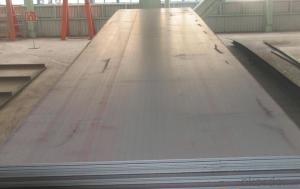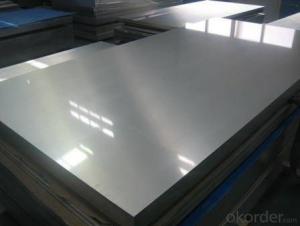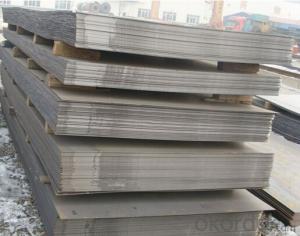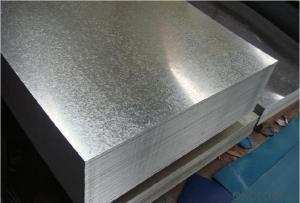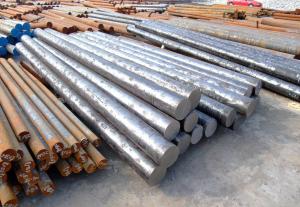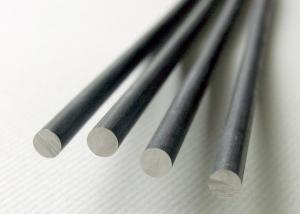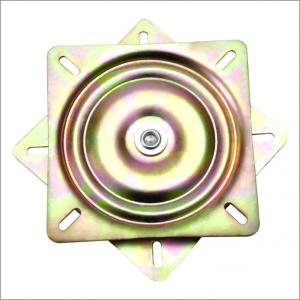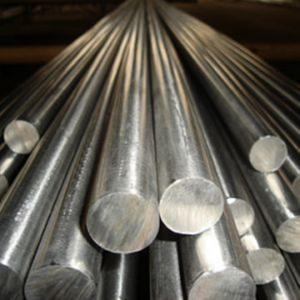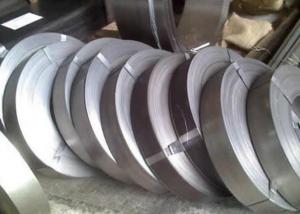Hot Rolled Steel Sheet_Plate Weight with High Quality
- Loading Port:
- Tianjin
- Payment Terms:
- TT OR LC
- Min Order Qty:
- 3 m.t.
- Supply Capability:
- 10000 m.t./month
OKorder Service Pledge
OKorder Financial Service
You Might Also Like
Item specifice
Hot Rolled Steel Sheet_Plate Weight with High Quality
Thickness:0.6-200mm
Width:1000-4000mm
MOQ: 1 ton
Certificate:ISO,SGS
Hot Rolled Steel Sheet_Plate Weight with High Quality
Commodity | Carbon Steel Hot Rolled Coil_Plate_Strip_Sheet |
Thickness | 0.6-200mm |
Width | 1000-4000mm |
Length | as custom's request |
Technique | Cold rolled or hot rolled mild steel plate |
Surface treatment | Bare, galvanized coated or as customer's requirements. |
Standard | ASTM,EN,GB,JIS |
Material | SS330, SS400, SPHC, SPHD, SPHE, Q195, Q195L, Q235, Q345, 08AL |
Usage | 1. Automobile, Bridges, Buildings,
2. Machinery, Pressure vessel industries.
3. Ship building, Engineering construction,
4. Mechanical manufacturing, Pavement slab, ect.
|
Terms of Payment | 30% T/T as deposit and 70% T/T balance againest B/L copy. |
Delivery Detail | Within 3-15 days after receipt of deposited for the mild steel plate |
CNBM Introduction of Hot Rolled Steel Sheet_Plate Weight with High Quality
CNBM International Corporation is the most import and export platform of CNBM group(China National Building Material Group Corporation) ,which is a state-owned enterprise, ranked in 270th of Fortune Global 500 in 2015.
With its advantages, CNBM International are mainly concentrate on Cement, Glass, Iron and Steel, Ceramics industries and devotes herself for supplying high quality series of refractories as well as technical consultancies and logistics solution.
After-sale service |
|
Advantages
|
|
Packaging & Delivery of Hot Rolled Steel Sheet_Plate Weight with High Quality
Packaging Detail | Sea worthy packing /as per customer's packing instruction |
Delivery Detail | 15 ~ 40 days after receiving the deposit |
Products
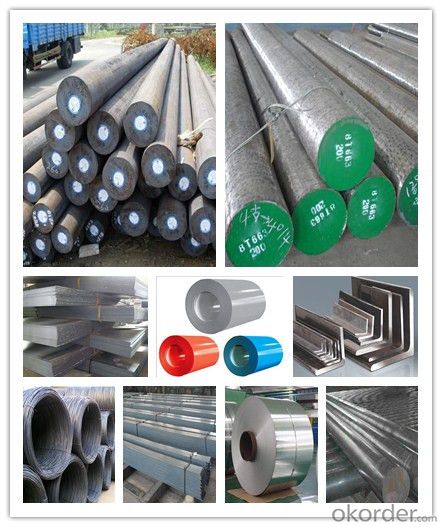
FAQ:
Are you a trading company or manufacturer? | Manufacturer |
What’s the MOQ? | 3 metric ton |
What’s your delivery time? | 15-35 days after downpayment received |
Do you Accept OEM service? | Yes |
what’s your delivery terms? | FOB/CFR/CIF |
What's the Payment Terms? | 30% as deposit,70% before shipment by T/T |
Western Union acceptable for small amount. | |
L/C acceptable for large amount. | |
Scrow ,Paybal,Alipay are also ok | |
Why choose us? | Chose happens because of quality, then price, We can give you both. Additionally, we can also offer professional products inquiry, products knowledge train (for agents), smooth goods delivery, excellent customer solution proposals. |
What's your available port of Shipment? | Main Port, China |
What’s your featured services? | Our service formula: good quality+ good price+ good service=customer's trust
|
Where are your Market? | Covering more than 160 countries in the world |
- Q:What are the main factors affecting the wear resistance of special steel?
- There are several main factors that affect the wear resistance of special steel. Firstly, the composition of the steel plays a crucial role. The addition of certain alloying elements, such as chromium, vanadium, and tungsten, can significantly enhance the wear resistance of the steel. These elements form hard carbides or nitrides within the steel matrix, which increase its hardness and resistance to wear. Secondly, the heat treatment process used on the steel greatly influences its wear resistance. Through processes like quenching and tempering, the steel can be hardened to achieve a desired level of wear resistance. The heat treatment also helps in refining the microstructure of the steel, making it more resistant to wear and deformation. Thirdly, the microstructure of the steel is another important factor. The presence of fine grains and a homogeneous distribution of carbides or other reinforcing phases within the steel matrix greatly enhances its wear resistance. Additionally, the presence of retained austenite, a metastable phase, can also contribute to improved wear resistance. Furthermore, the hardness of the steel is a key determinant of its wear resistance. A higher hardness level generally translates to better wear resistance, as it provides resistance against the abrasive forces acting on the steel surface. Lastly, the design and surface finish of components made from special steel also affect their wear resistance. The shape, size, and surface roughness of the components can influence the distribution and magnitude of the contact stresses on the steel, thereby affecting its wear resistance. In conclusion, the wear resistance of special steel is influenced by factors such as its composition, heat treatment, microstructure, hardness, and the design and surface finish of the components. By carefully considering these factors, engineers can optimize the wear resistance of special steel for various applications.
- Q:What are the properties of creep-resistant steel?
- Creep-resistant steel is known for its ability to withstand high temperatures and prolonged exposure to stress without significant deformation. It has a high creep strength, which means it can resist the gradual elongation and deformation that occurs under constant load or stress over time. This type of steel also exhibits excellent resistance to rupture, corrosion, and oxidation at elevated temperatures. Additionally, it maintains its mechanical properties, such as hardness and tensile strength, even in extreme conditions, making it ideal for applications in power generation, aerospace, and other industries where high temperatures and stress are present.
- Q:How does special steel perform in high-temperature creep resistance?
- Special steel is known for its exceptional performance in high-temperature creep resistance. Creep refers to the tendency of a material to deform or strain under constant stress when exposed to elevated temperatures. In such conditions, ordinary steels may exhibit significant creep, leading to a loss of mechanical properties and potential failure. However, special steels are specifically designed to withstand high-temperature creep, making them ideal for applications where resistance to time-dependent deformation is critical. These steels are often alloyed with elements such as chromium, molybdenum, and vanadium, which enhance their high-temperature properties. The alloying elements in special steels form stable carbides and nitrides, which act as strengthening agents, inhibiting grain growth, and preventing dislocation movement. This results in improved creep resistance and structural stability even at extreme temperatures. Additionally, special steels often undergo heat treatment processes such as quenching and tempering, which further enhance their creep resistance and overall mechanical performance. Furthermore, the microstructure of special steels is carefully controlled during the manufacturing process to ensure optimal creep resistance. Fine-grained structures with a high density of precipitates or second-phase particles are typically developed, which hinder dislocation movement and improve creep strength. In summary, special steels exhibit exceptional high-temperature creep resistance due to their alloying elements, heat treatment processes, and controlled microstructures. These steels can reliably withstand prolonged exposure to elevated temperatures without significant deformation or loss of mechanical properties, making them invaluable in industries such as aerospace, power generation, and petrochemicals where high-temperature applications are common.
- Q:What is the impact of carburizing on the properties of special steel?
- The process known as carburizing, or case hardening, is utilized to introduce carbon into the surface layer of special steel, resulting in several beneficial effects. Firstly, carburizing forms a tough outer layer, called the case, which is carbon-rich. The infusion of carbon atoms into the steel matrix during carburizing increases the carbon content on the surface, leading to a higher level of hardness compared to the core. This hardened case provides exceptional resistance against wear, abrasion, and surface fatigue, making it ideal for applications requiring high durability, such as gears, camshafts, and bearings. Moreover, carburizing enhances the strength of the steel by improving its ability to form martensite, a hard, crystalline structure. This transformation contributes further to the hardness and strength of the carburized steel, making it suitable for applications necessitating high load-bearing capacity, like shafts and axles. Furthermore, carburizing has the potential to improve the fatigue resistance of special steel. The hardened case created during the carburizing process helps distribute stress evenly across the surface, reducing the probability of crack initiation and propagation. This enhanced resistance to fatigue failure makes carburized steel appropriate for components exposed to cyclic loading, such as gears and springs. However, it is important to acknowledge that carburizing also has its drawbacks. The higher carbon content on the surface can reduce the material's ductility and toughness, making it more susceptible to brittle fracture. To address this issue, it is common practice to utilize steel with a lower carbon content for the core, ensuring a balance between hardness and toughness. In conclusion, carburizing significantly impacts the properties of special steel, enhancing hardness, wear resistance, and strength, which is advantageous for applications requiring durability, high load-bearing capacity, and fatigue resistance. Nevertheless, careful control of the process is necessary to maintain a balance between hardness and toughness, ensuring the overall performance and reliability of the material.
- Q:What are the main applications of special steel in the oil and gas equipment?
- Special steel is widely used in the oil and gas equipment industry due to its exceptional properties such as high strength, corrosion resistance, and heat resistance. It is primarily used in applications such as drilling rigs, pipelines, valves, pumps, and offshore platforms. Special steel ensures the durability and reliability of these equipment in harsh environments, thereby enhancing the overall efficiency and safety of oil and gas operations.
- Q:Can special steel be used in the mining equipment manufacturing industry?
- Yes, special steel can be used in the mining equipment manufacturing industry. Special steel, such as high-strength or wear-resistant steel, is often utilized in the construction of mining equipment due to its ability to withstand harsh conditions, heavy loads, and abrasive materials encountered in the mining industry.
- Q:What are the specific requirements for special steel used in the marine industry?
- The specific requirements for special steel used in the marine industry include high corrosion resistance, ability to withstand extreme temperatures and pressure, superior strength and toughness, good weldability, and resistance to fatigue and cracking. Additionally, the steel should be able to withstand exposure to seawater and other harsh environmental conditions without deteriorating or causing any negative impact on the marine ecosystem.
- Q:What are the different methods of surface shot blasting for special steel?
- There are several different methods of surface shot blasting that can be used for special steel. Some of the most common methods include: 1. Wheel blasting: This method involves using a wheel with abrasive particles to blast the surface of the special steel. The wheel spins rapidly and throws the abrasive particles onto the steel, removing any contaminants or imperfections. 2. Air blasting: In this method, compressed air is used to propel abrasive particles onto the surface of the special steel. The high-speed impact of the particles helps to clean and prepare the surface for further treatment or coating. 3. Wet blasting: This technique involves mixing abrasive particles with water and then spraying the mixture onto the surface of the special steel. The water helps to control the dust and heat generated during the blasting process, making it suitable for sensitive or delicate steel surfaces. 4. Vacuum blasting: Vacuum blasting combines the use of abrasive particles with a vacuum system to remove both the particles and the contaminants from the surface of the special steel. This method is particularly useful for removing paint or coatings from the steel. 5. Shot peening: Shot peening is a specialized form of shot blasting that is used to enhance the strength and fatigue resistance of the special steel. It involves bombarding the surface with small spherical particles, which create compressive stresses that improve the steel's durability. Each of these methods has its own advantages and is suitable for different types of special steel and surface conditions. The choice of method will depend on factors such as the desired surface finish, the level of contamination, and the specific requirements of the steel application.
- Q:What are the properties of high-temperature stainless steel?
- High-temperature stainless steel possesses excellent heat resistance, corrosion resistance, and mechanical strength even at elevated temperatures. It retains its structural integrity and is capable of withstanding extreme thermal conditions, making it suitable for various high-temperature applications such as in aerospace, power generation, and chemical industries.
- Q:How does special steel perform in stamping applications?
- The unique properties of special steel make it an excellent choice for stamping applications. Its high strength and durability ensure that it can withstand wear and tear during the stamping process, resulting in longer tool life and reduced maintenance costs. Additionally, special steel's heat resistance allows it to maintain its structural integrity even at high temperatures, preventing warping or deformation. Its exceptional dimensional stability ensures precise and consistent results, while its excellent formability allows for the creation of intricate designs. Overall, special steel's properties make it a reliable and versatile option for a wide range of stamping applications.
1. Manufacturer Overview |
|
|---|---|
| Location | |
| Year Established | |
| Annual Output Value | |
| Main Markets | |
| Company Certifications | |
2. Manufacturer Certificates |
|
|---|---|
| a) Certification Name | |
| Range | |
| Reference | |
| Validity Period | |
3. Manufacturer Capability |
|
|---|---|
| a)Trade Capacity | |
| Nearest Port | |
| Export Percentage | |
| No.of Employees in Trade Department | |
| Language Spoken: | |
| b)Factory Information | |
| Factory Size: | |
| No. of Production Lines | |
| Contract Manufacturing | |
| Product Price Range | |
Send your message to us
Hot Rolled Steel Sheet_Plate Weight with High Quality
- Loading Port:
- Tianjin
- Payment Terms:
- TT OR LC
- Min Order Qty:
- 3 m.t.
- Supply Capability:
- 10000 m.t./month
OKorder Service Pledge
OKorder Financial Service
Similar products
New products
Hot products
Related keywords
